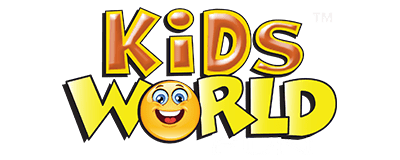From Storytelling to Strategy: How Education-Based Content Builds Authority Online
Trust is everything in today’s digital world, whether you’re a parent looking for quality learning resources, a teacher creating lesson plans, or a brand hoping to connect with your audience. One simple truth remains: educational content is one of the most powerful tools for building lasting authority online.
It’s not just about telling a good story; it’s about crafting the right message with a clear purpose. When delivered thoughtfully, continually, and strategically, educational content has the power not only to inform but also to inspire confidence, loyalty, and long-term engagement.
Why Educational Content Matters More Than Ever
We happen to be living in an information explosion era, where reliable information is difficult to find. That’s exactly why educational content is valued so much; it fills the gap between curiosity and clarity.
For parents, this could be in the form of blog posts with explanations of child development milestones or tips and tricks for encouraging reading at home. For teachers, it might be a lot of downloadable worksheets or creative activity ideas. For kids, it is just about exciting, age-relevant stories or activities that make learning great fun.
But beyond the immediate usefulness, educational content has another role: it establishes trust. When people find your content helpful, they’re more likely to return, to share it, and to see you as an authority in your space.
Storytelling: The Soul of Effective Education
Storytelling has been at the heart of human connection since time began, and that doesn’t shift in the digital space. A well-spun tale invests information with memorability, emotional resonance, and a call to action.
Instead of writing some dry article on why reading is important, for instance, a compelling story about the way a child came into his confidence through and through with books is much more relatable. It helps the reader see themselves in the situation, whether they’re a parent, teacher, or child.
This is a technique that’s particularly significant while making content for a younger audience. Children don’t take too well to lecture kinds of explanations, but rather to those narratives that fire up their imagination and empathy.
Meanwhile, it is just the beginning of storytelling. Even the best story would get lost in the noise if it did not have a strategy behind it.
The Role of Strategy in Educational Content
But that means truly building authority online requires meaningful and methodical content: namely, who you’re speaking to, what problems they face, and how you can solve those problems clearly and accessibly.
Here’s what a good educational content strategy includes:
- Audience knowledge: Know who you are writing for, whether it is children, parents, or educators, and what their needs are.
- Content planning: Focus on the topics that count and then organize them in a manner supportive of learning.
- Consistency: Regular publishing builds familiarity and generates trust.
- SEO optimization: The placement of relevant keywords naturally will make your content discoverable.
- Aids to the visual: Pictures, infographics, and videos make learning more interactive and engaging.
- Distribution: Ensure that whatever you write reaches the correct target on the correct platform.
Most of the brands that want to professionalize the content approach work with specialist partners like millenio.co.uk, which focuses on data-driven yet human-centered content strategies. Be it designing a content calendar or search engine optimization, strategic support ensures your message doesn’t just sound good; it gets noticed.
Backlinks: The Digital Seal of Approval
The beauty of creating great content is only half the equation. Establishing real authority online means your content also needs endorsement. In the digital world, this comes in the form of backlinks, when other trusted websites link to your content as a valuable resource.
Why does it matter? Well, search engines look at backlinks as votes of confidence. The more high-quality sites that link to your educational content, the better your content is likely to rank in search results, and the more visible and credible your platform becomes.
Websites like buildalink.io specialize in the ethical building of such links, placing your content on relevant and reputable sites. This isn’t about spammy link exchanges, it’s about making sure your truly helpful content receives the attention that audiences and algorithms alike believe it deserves.
Authority That Lasts: How to Build
Educational content isn’t a quick win; it is a long-term investment. But that is just what makes it so strong.
Through value creation, repeatedly delivered, you build a reputation. Parents learn to trust your recommendations. Teachers return for inspiration on your site. Children like coming back to your stories, activities, or lessons. Over time, you are no longer just a content source but an authority to be relied upon.
This is even more true on platforms where trust and safety are supposed to mean much more, such as those directed at a younger audience. Offering clear, age-appropriate, and genuinely useful content doesn’t just position you as a good resource; it sets a higher standard for what educational content should be.
Conclusion
The way from storytelling to strategy should be a path every educator developing content would love to travel. Where a great story might begin to build interest, it’s in the strategic execution, audience insight, SEO, content planning, and outreach for backlinks that turn content into an actual asset for growth.
Whether you are a one-person educator, a parent-led blog, or even a brand trying to make your presence felt in the learning space, the formula remains the same: create with purpose, share with intention, and always aim to educate before you promote. Because in a world full of noise, the brands that teach are the ones people come back to.


